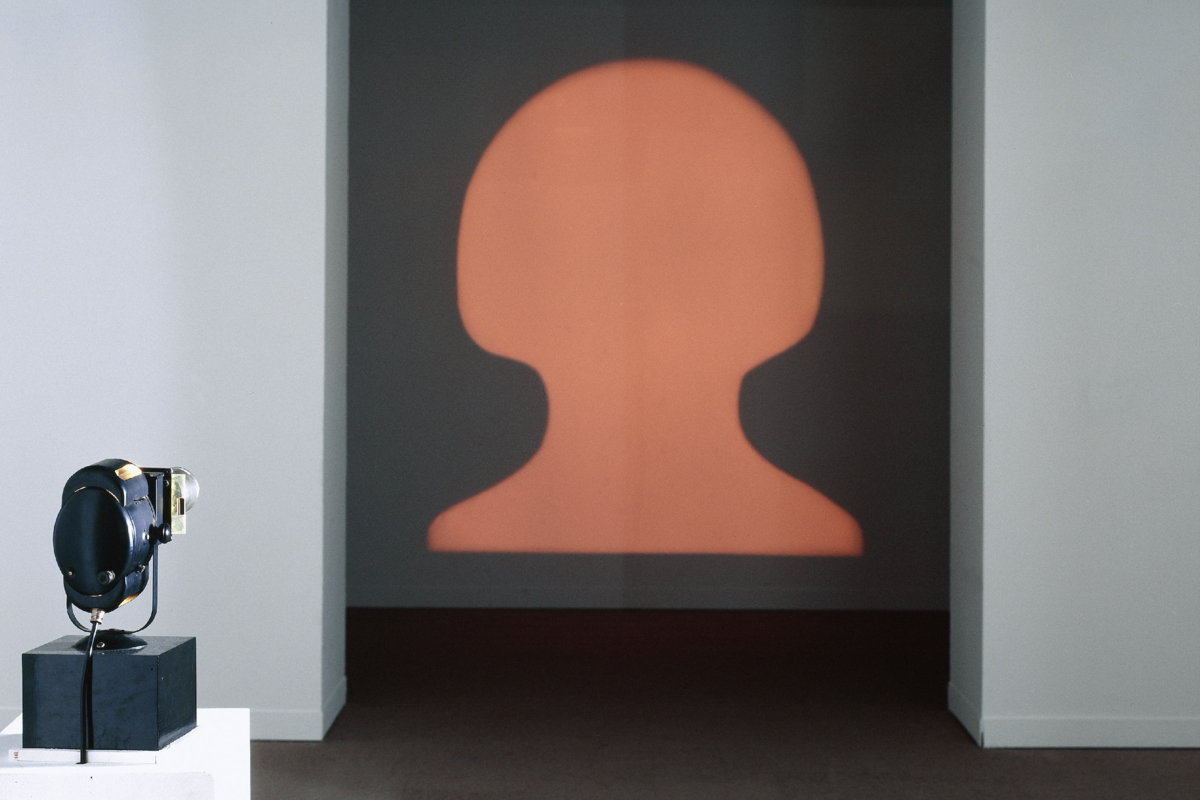Centre Pompidou × West Bund Museum Project
Mirrors of the Portrait
Highlights of the Centre Pompidou Collection, Vol. III
21 July 2023 - 16 Feburary 2025 | Gallery 1 & 2
Following on from “The Shape of Time” and “The Voice of Things”, the Centre Pompidou × the West Bund Museum will be presenting the third part of its semi-permanent exhibition entitled “Mirrors of the Portrait” from the summer of 2023 and until earily 2025. Bringing together a selection of three hundred works from the Centre Pompidou collection dating from 1895 to the present day, this new presentation in fifteen sections highlights the multiple facets of the art of the portrait.
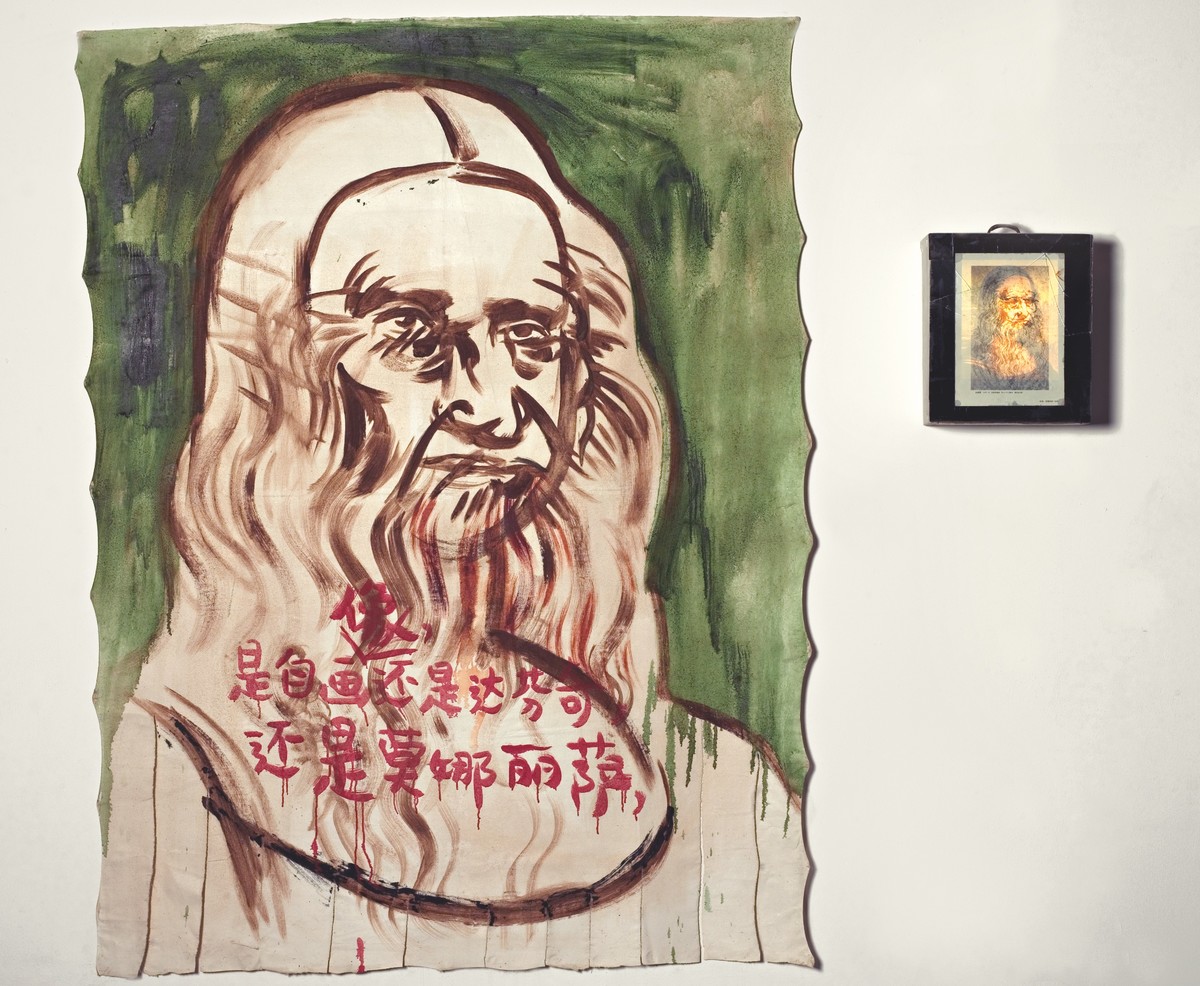
HUANG Yong Ping, Mona-Vinci, 1986 - 1987,Oil on cut canvas, wood, metal, glass, paper, light bulb
Light box: 33 × 28 × 13 cm
Canvas: 165 × 126 cm
© Adagp, Paris, 2023
Crédit photographique : Georges Meguerditchian - Centre Pompidou, MNAM-CCI /Dist. RMN-GP
Before they enabled us to recognise the artists who created them, portraits served to identify the person they represented. Since the 19th century, however, artistic excellence has not been assessed on the basis of resemblance or technical skill. In German photographer August Sander’s photographic portraits, only the artists, opinion leaders and prominent figures retained their names. But all, whether unknowns or celebrities, were entitled to a portrait. Photography provided the masses with what had previously been the privilege of the few. And more than ever, all portraits were portraits of society.
Here the presentation of the Centre Pompidou collection is exhibited along a tour punctuated with many encounters. The exhibition unfolds in a theme-based breakdown rather than in chronological order. Famous figures and forgotten artists are presented side by side. The first section, “In Colour”, reminds us that the moderns put an end to the lacklustre hues to which the portrait genre had long been confined. The second, “Disfiguring”, underscores the fact that they had to break free from the conventions of representation. The “Hats Off!” section which concludes the presentation testifies to our admiration as we take our leave.

Alexander Calder, Mask, 1929, Iron thread, 38 × 29.5 × 29 cm
© Calder Foundation, New York
© Adagp, Paris, 2023
Crédit photographique : © Centre Pompidou, MNAM-CCI / Georges Meguerditchian / Dist. RMN-GP
Organisation of the exhibition
Section 1: In colour
After the extraordinary watershed represented by the Renaissance in Europe, Western portrait painting lost its colours for many years. For a long period, sombre garments were de rigueur and the background had to be as neutral as possible. At the turn of the 19th and 20th centuries, the convention of realism was abandoned, and with it the focus on resemblance which demanded chromatic realism that respected clothing fashions and strove to give a plausible shade to the skin. The avant-garde artists surprised contemporaries with their use of colour. This is evident in the highly colourful portraits of František Kupka and Kees van Dongen, among others, and, more recently, in Bruce Nauman’s self-portrait.
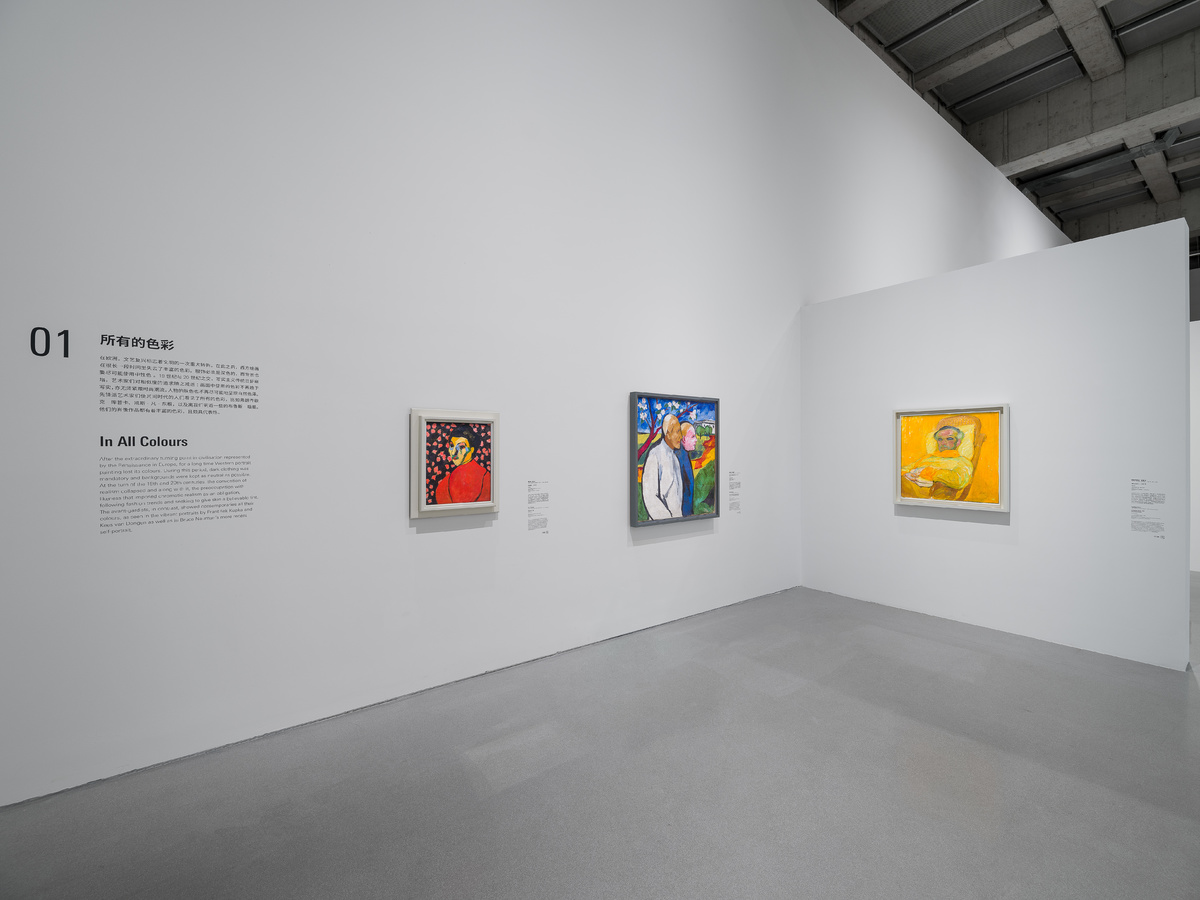
Mirrors of the portrait——Highlights of the Centre Pompidou collection Third semi-permanent exhibition, exhibition view, West Bund Museum, Photo:Alessandro Wang
Section 2: Disfiguring ?
Maurice de Vlaminck produced a self-portrait in the Cubist style which he quickly abandoned and thereafter never ceased to condemn vehemently, targeting Pablo Picasso in particular, whose “disfigured” portraits he delighted in mocking, along with the most reactionary elements of society. Picasso, on the other hand, flaunted his audacity and remained Cubist while continuing with a multiplicity of metamorphoses throughout his life. The comment of German collector Walther Rathenau on observing his portrait painted by Edvard Munch is enlightening: “This is what happens when we allow ourselves to be painted by a great artist: we begin to resemble the work rather than ourselves”. The artists presented here blur our vision of the human figure by breaking free from the conventions of representation.
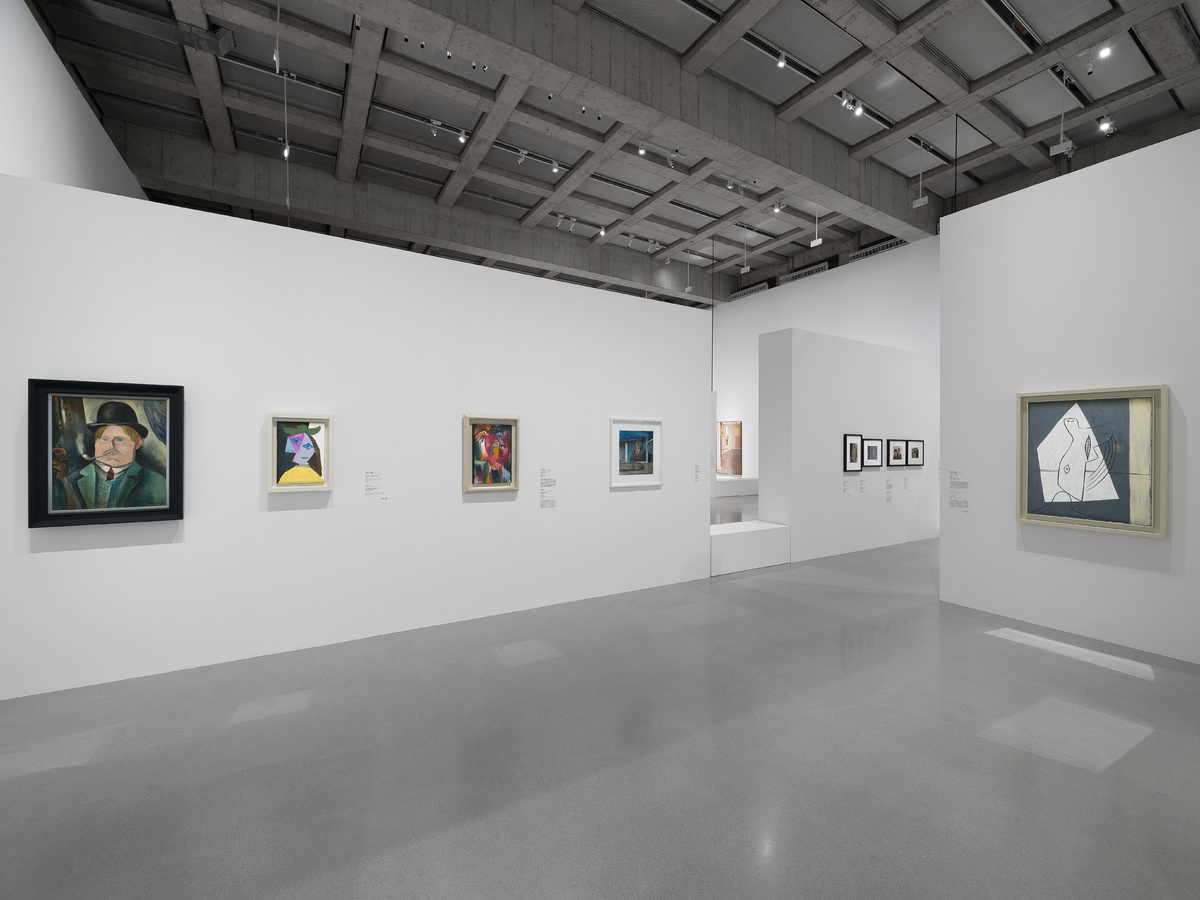
Mirrors of the portrait——Highlights of the Centre Pompidou collection Third semi-permanent exhibition, exhibition view, West Bund Museum, Photo:Alessandro Wang
Section 3: Celebrities and Unknowns
In the corpus of more than five hundred photos taken and assembled by August Sander between 1892 and 1954 with the title People of the 20th Century, the photographer made a distinction between seven major socio-professional categories. Here we add two other groups: celebrities and unknowns. The social status of the former earned them the distinction of having their names mentioned by the photographer. The latter group were lower down and sometimes at the bottom of the social ladder. They had so few characteristics that they were “indescribable”. Sander paid the same attention to them as to the others, but he omitted to mention their identity. This section owes its distinctive character to the direct juxtaposition of photographs of representatives of these two groups. But this same general principle is respected in this presentation in which famous artists are presented side by side with forgotten unknowns.
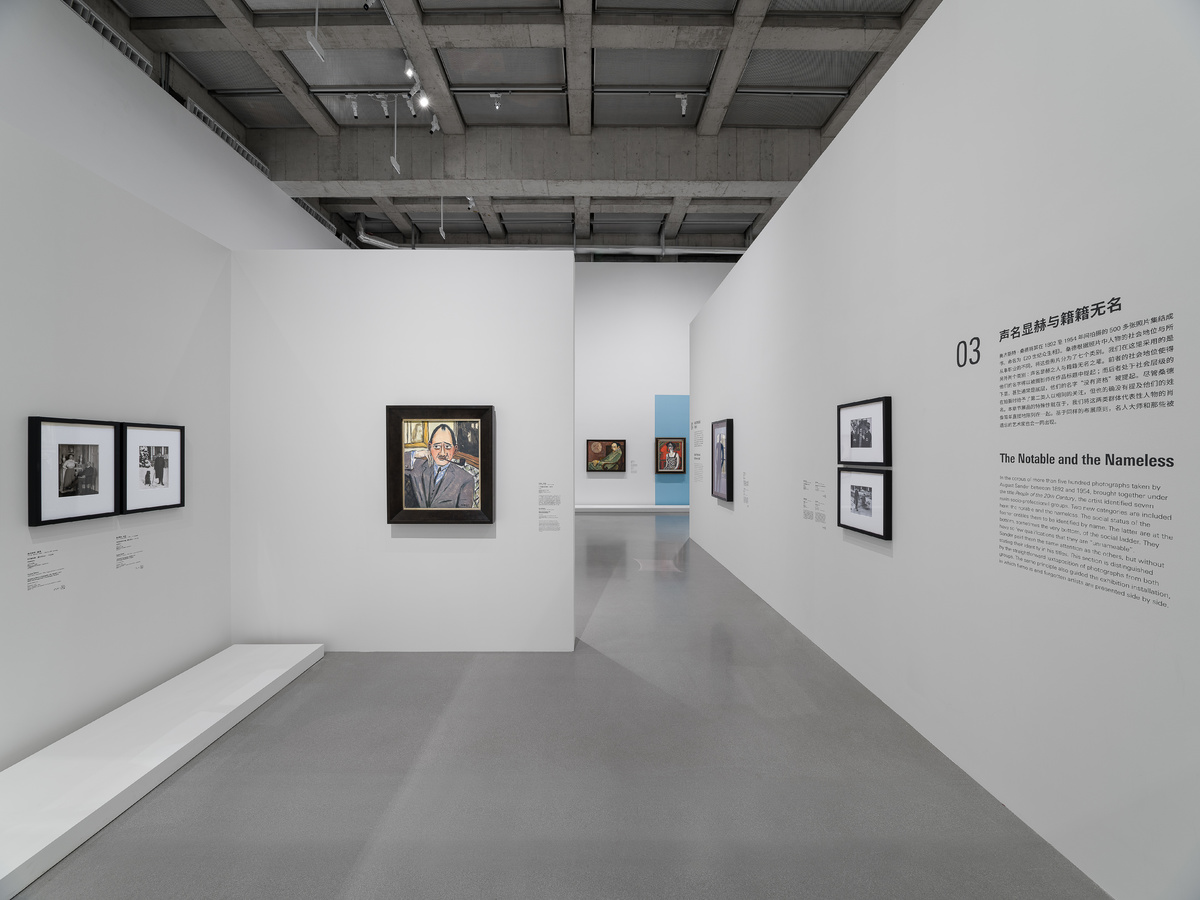
Mirrors of the portrait——Highlights of the Centre Pompidou collection Third semi-permanent exhibition, exhibition view, West Bund Museum, Photo:Alessandro Wang
Section 4: Portraits and Self-Portraits by Artists 1
Why do so many artists paint, sculpt and photograph each other? Because they can expect their peers to be more available and more understanding than anyone else. Friends trust each other more or less naturally and casually. But casualness is out of the question when artists have only themselves to trust as they engage in the doppelgänger exercise of making a self-portrait. They seem to have unlimited freedom: no one will be more patient and no one else can reproach them for presenting such a true image. But faithful to what? Who can say? No artist can elude the degree of artifice generated by the experience of a self-portrait.
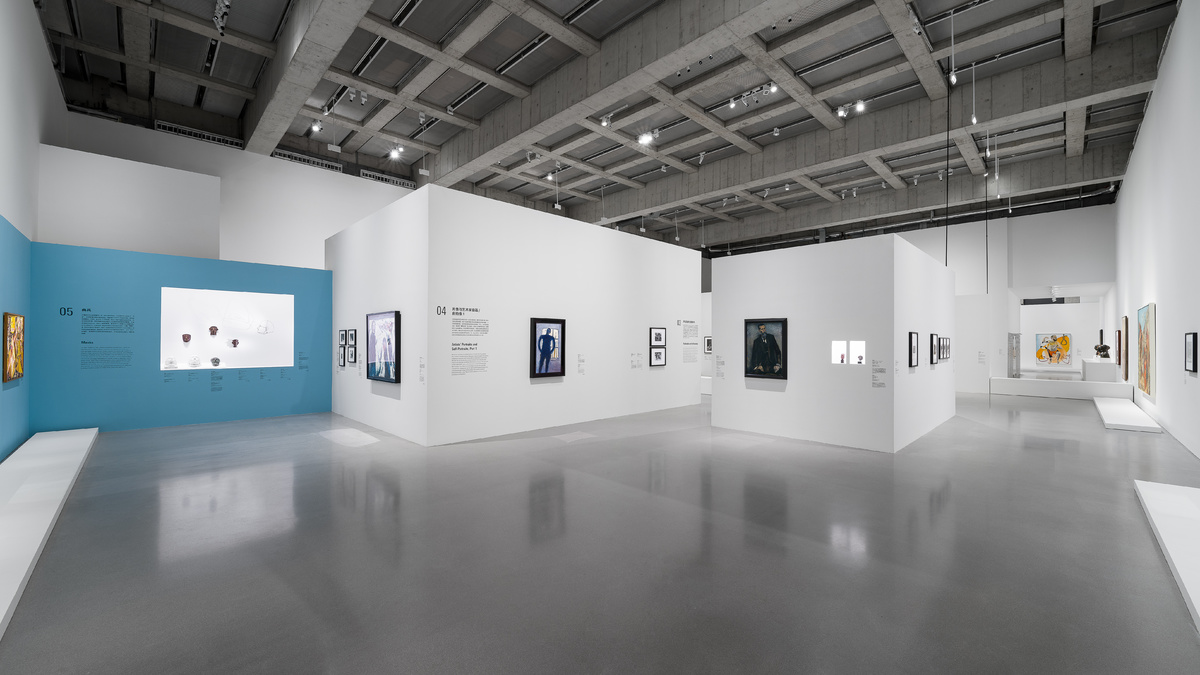
Mirrors of the portrait——Highlights of the Centre Pompidou collection Third semi-permanent exhibition, exhibition view, West Bund Museum, Photo:Alessandro Wang
Section 5: Masks
On the margins of the Centre Pompidou collection, we can find objects with a wealth of useful information on the history of art, though not artworks in themselves. We can thus find death masks, echoes of a practice that began in the West in the 13th century, according to historian Philippe Ariès who associates it with the need for preservation, to keep a trace after death.
No one could imagine a more faithful portrait. The mask of Amedeo Modigliani receives a triple presentation here: a photograph of the plaster original by Man Ray, a bronze cast by Jacques Lipchitz, and a photograph of the cast that André Kertész found in painter Moïse Kisling’s affairs. Conversely, the mask is the accessory par excellence for dressing up, showing itself
the better to conceal.
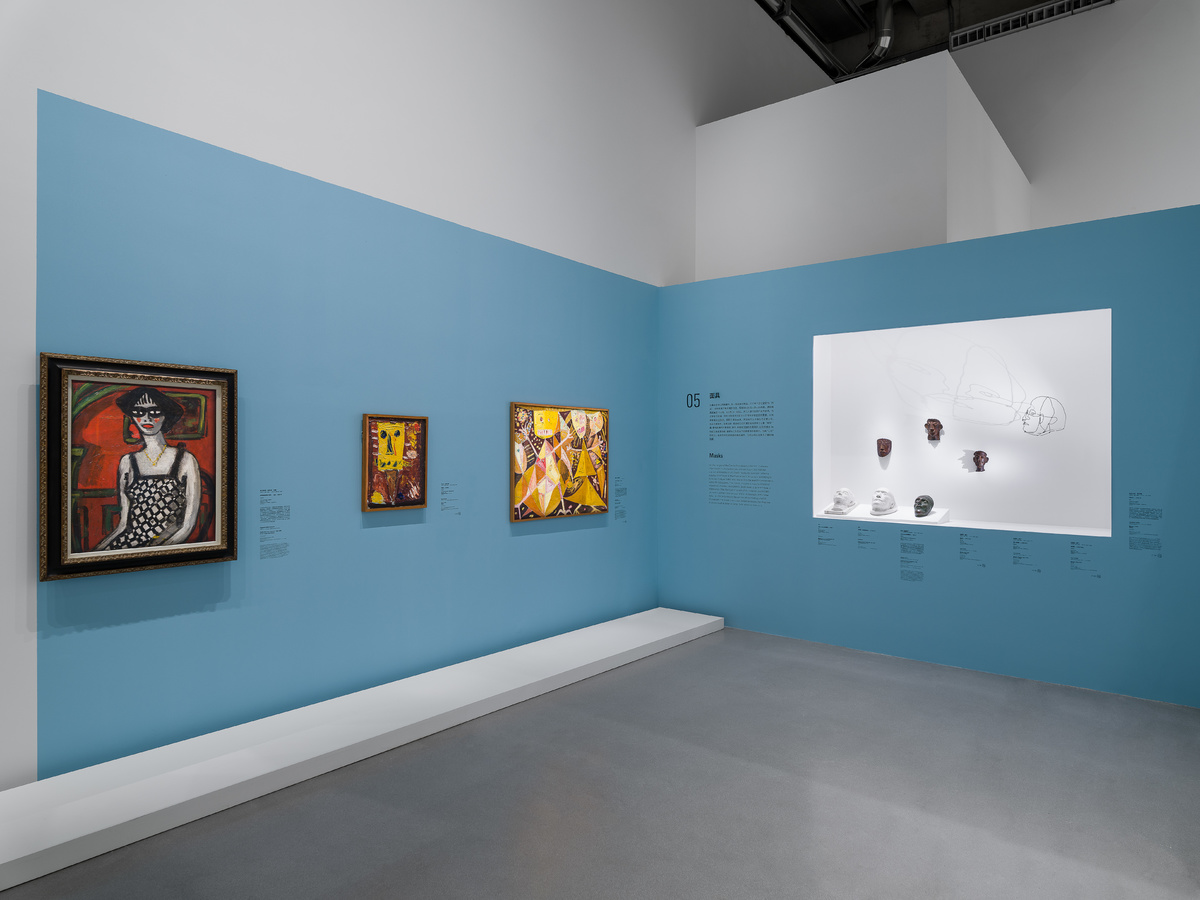
Mirrors of the portrait——Highlights of the Centre Pompidou collection Third semi-permanent exhibition, exhibition view, West Bund Museum, Photo:Alessandro Wang
Section 6: Photogenic
The character of being photogenic can be seen in two modes, major and minor. To be photogenic in major mode, models must overact their role before the camera, they have to catch the attention by grimacing, smiling or executing all the pirouettes of their choice. To be photogenic in minor mode, on the other hand, they have to play down the situation, act as if the photographer were transparent, sneer a little at them, and shine through their sheer presence without overacting. The photogenic characters brought together here clearly chose the second path. They are strong personalities who are unaccustomed to being intimidated. They are musicians, writers, artists and sometimes even... photographers! Their artistic aura comes across naturally in the image. The intensity they radiate comes from very far away.
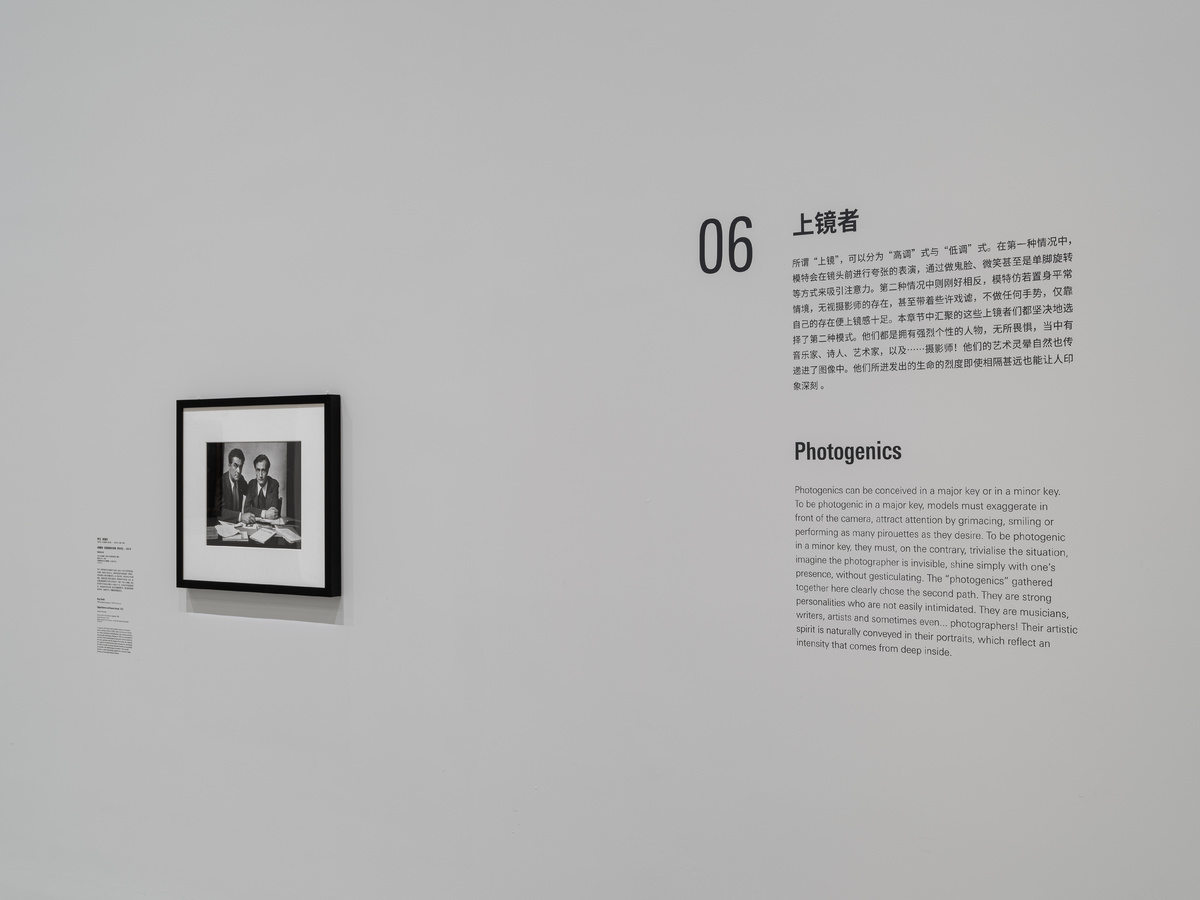
Mirrors of the portrait——Highlights of the Centre Pompidou collection Third semi-permanent exhibition, exhibition view, West Bund Museum, Photo:Alessandro Wang
Section 7: Family
Artists often recruited the members of their family as models. Mostly when they started out. But some, like Alberto Giacometti, continued. Others, like Giorgio de Chirico, returned to them. And others, like Pablo Picasso, changed models as they changed companions in their lives.
Art and life were inseparably connected, even with artists who ended up working without models. The family portrait can thus be seen as a stage in the life of an artist, and also as a genre in itself. Following on from August Sander, Boris Taslitzky’s completely different, more detached, anthropological and political approach in Algeria also involved portraits.
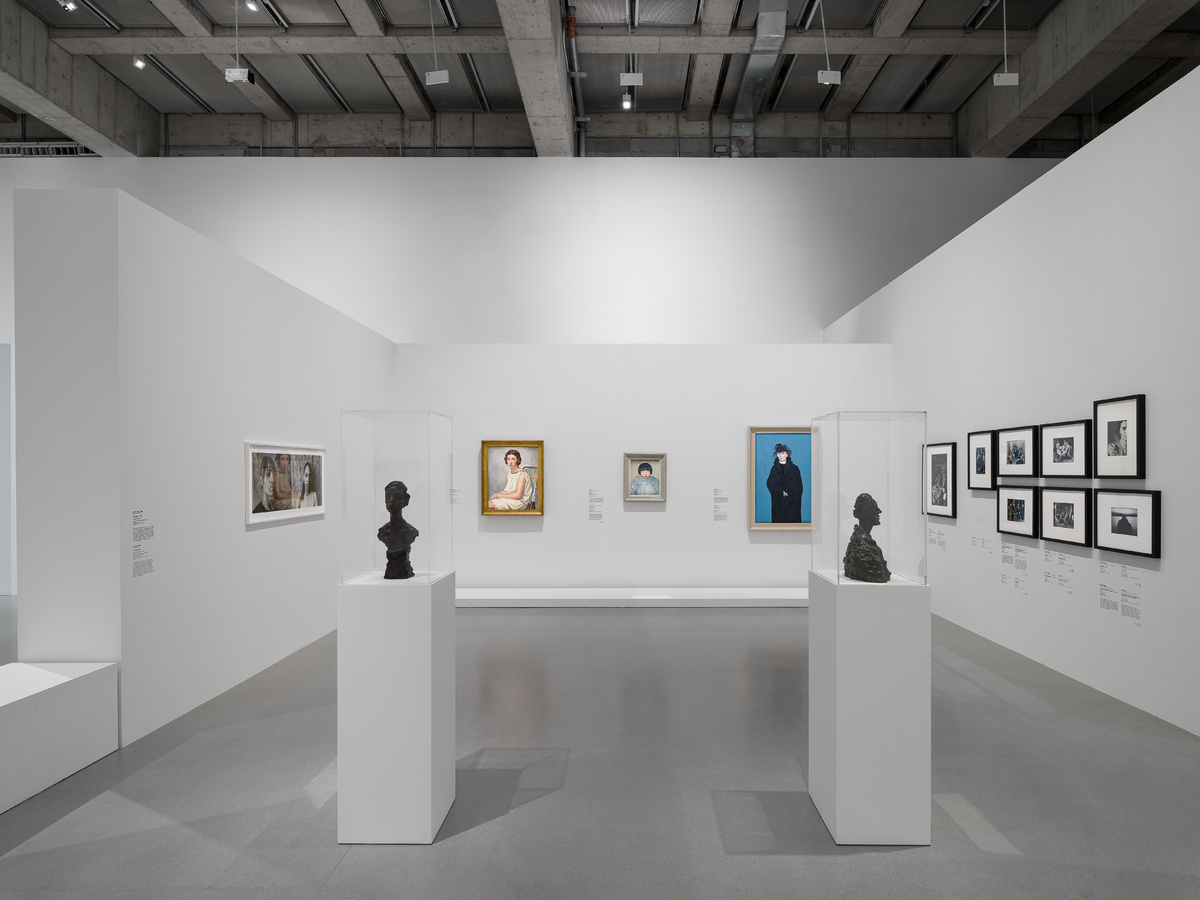
Mirrors of the portrait——Highlights of the Centre Pompidou collection Third semi-permanent exhibition, exhibition view, West Bund Museum, Photo:Alessandro Wang
Section 8: Ectoplasmes
Two ectoplasms watch a thoughtful young woman in Felice Casorati’s picture. There is no doubt about the nature of the apparition in the portrait by Flavio de Carvalho, the Brazilian artist, engineer, architect and pioneer in every domain, who wishes not only to paint the portrait of a man here but that of his soul, the soul of Paul Rivet, the ethnologist behind the creation of the Musée de l’Homme in Paris. The task is easier for Lettrist Maurice Lemaître, who two years later settled for the Portrait of a name he knew well: himself. On the other hand, there are grave doubts concerning the vanishing life of Jean Fautrier’s Otages (Hostages), when nothing distinguishes the liquefied silhouette of Zoltan Kemény’s Dame au fauteuil (Lady in the armchair) itself.
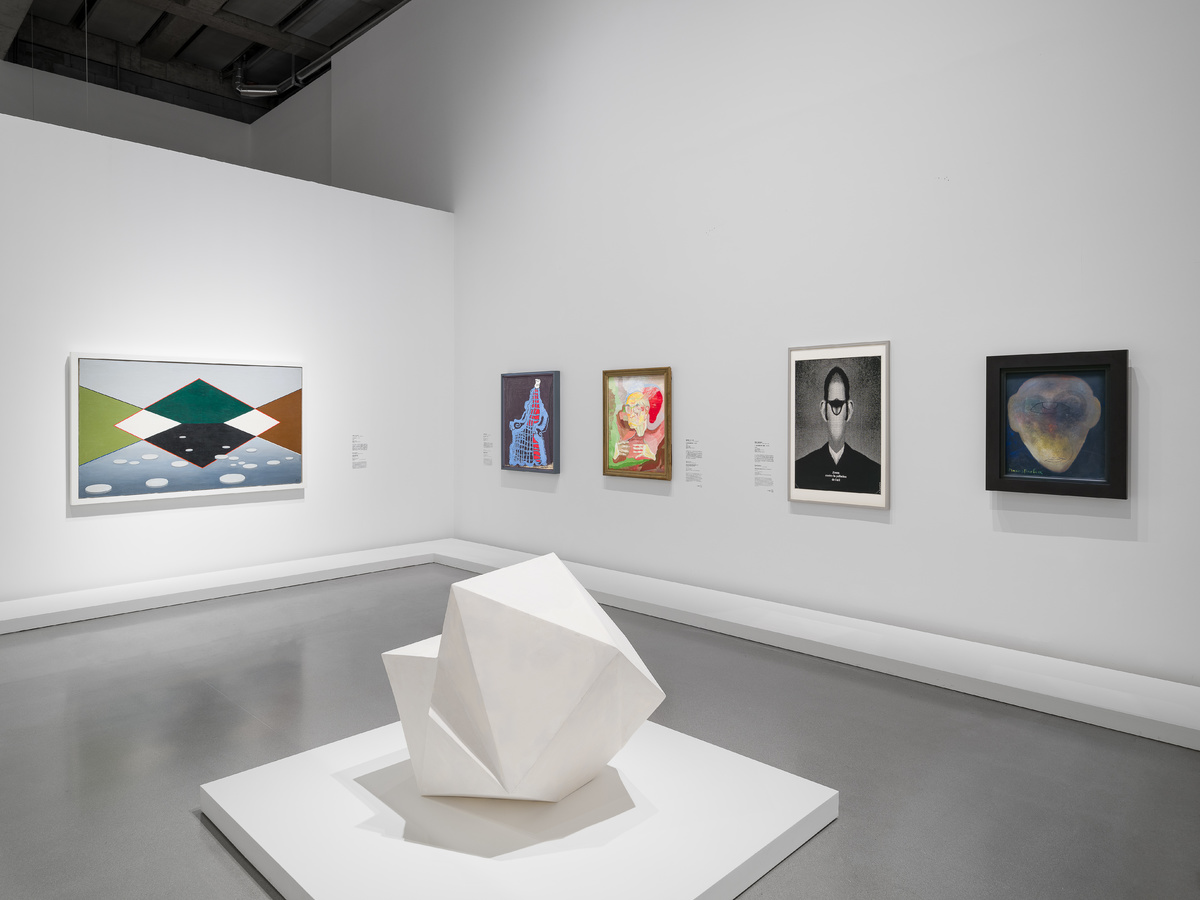
Mirrors of the portrait——Highlights of the Centre Pompidou collection Third semi-permanent exhibition, exhibition view, West Bund Museum, Photo:Alessandro Wang
Section 9: Grotesques
We can distinguish between those who display their madness: René Magritte, Maryan, Martin Kippenberger, Patrizio di Massimo... And those who are unaware of it: Georges Rohner or Bernard Buffet. In both categories, some take themselves as targets. Believing that they highlight their value, they sometimes mock themselves. In this respect, the comparison between Rohner and di Massimo is enlightening. The latter is an adept of derision and the other, whose work he has certainly never seen, nevertheless provides him with an astonishingly similar model, particularly if we compare the details of their hands. The first is a believer. The other, in order not to believe, deliberately gives himself up to caricature and the most emphatic grotesque.
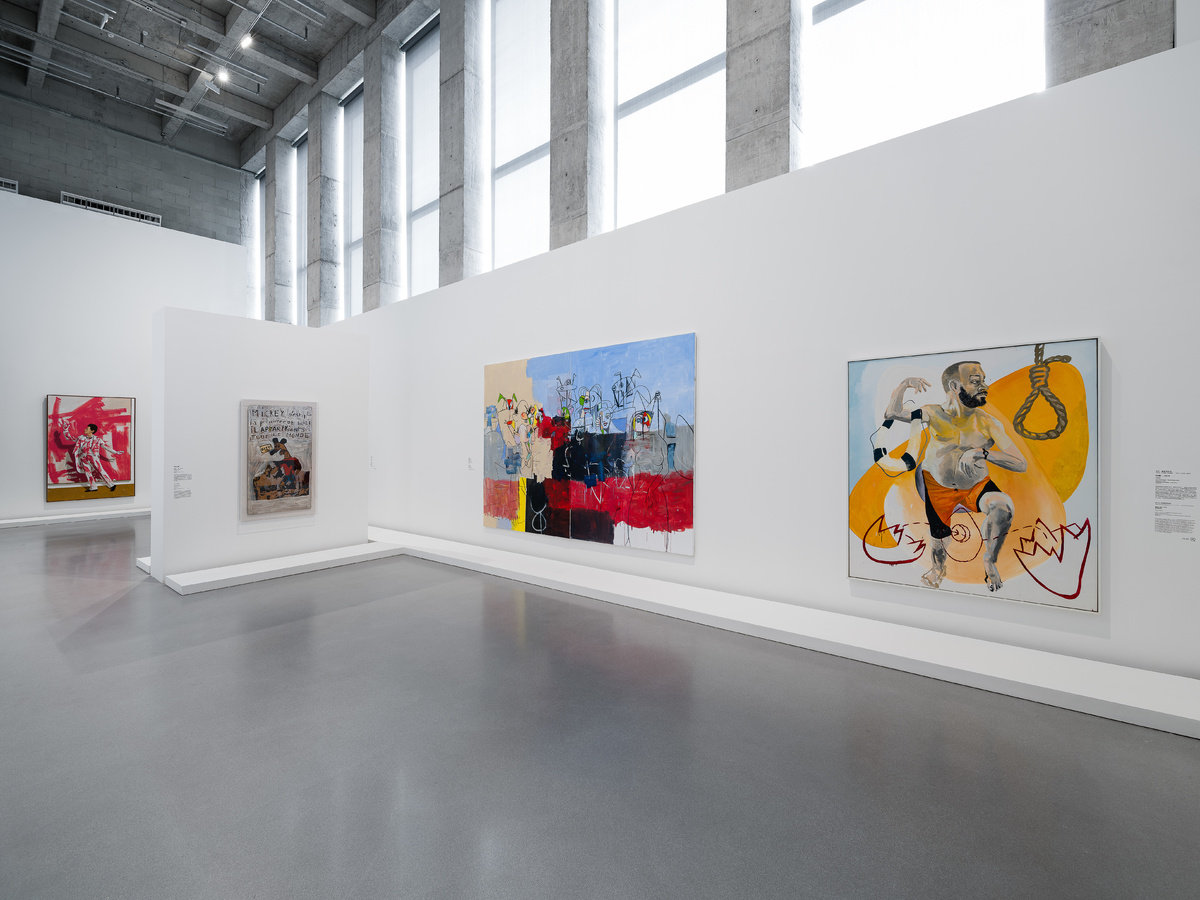
Mirrors of the portrait——Highlights of the Centre Pompidou collection Third semi-permanent exhibition, exhibition view, West Bund Museum, Photo:Alessandro Wang
Section 10: Passing by
The studios of the first photographers were scarcely distinguishable from those of painters. These photographers were also painters, offering their clientele the choice of posing before the depth of landscapes produced on curtains. A large majority of examples thus imposes the portrait genre as the interior representation of an inanimate subject: people move less in a limited space. Several decades went by before photographers could go out to encounter people in the street. Photography then underwent a watershed change. But it is not only the advent of the street portrait that interests us here, it is the transfiguration of anonymous individuals into leading figures and, conversely, the downgrading of celebrities taken out of context with,in both cases, the auratic exaggeration generated by this abandonment of the ordinary.
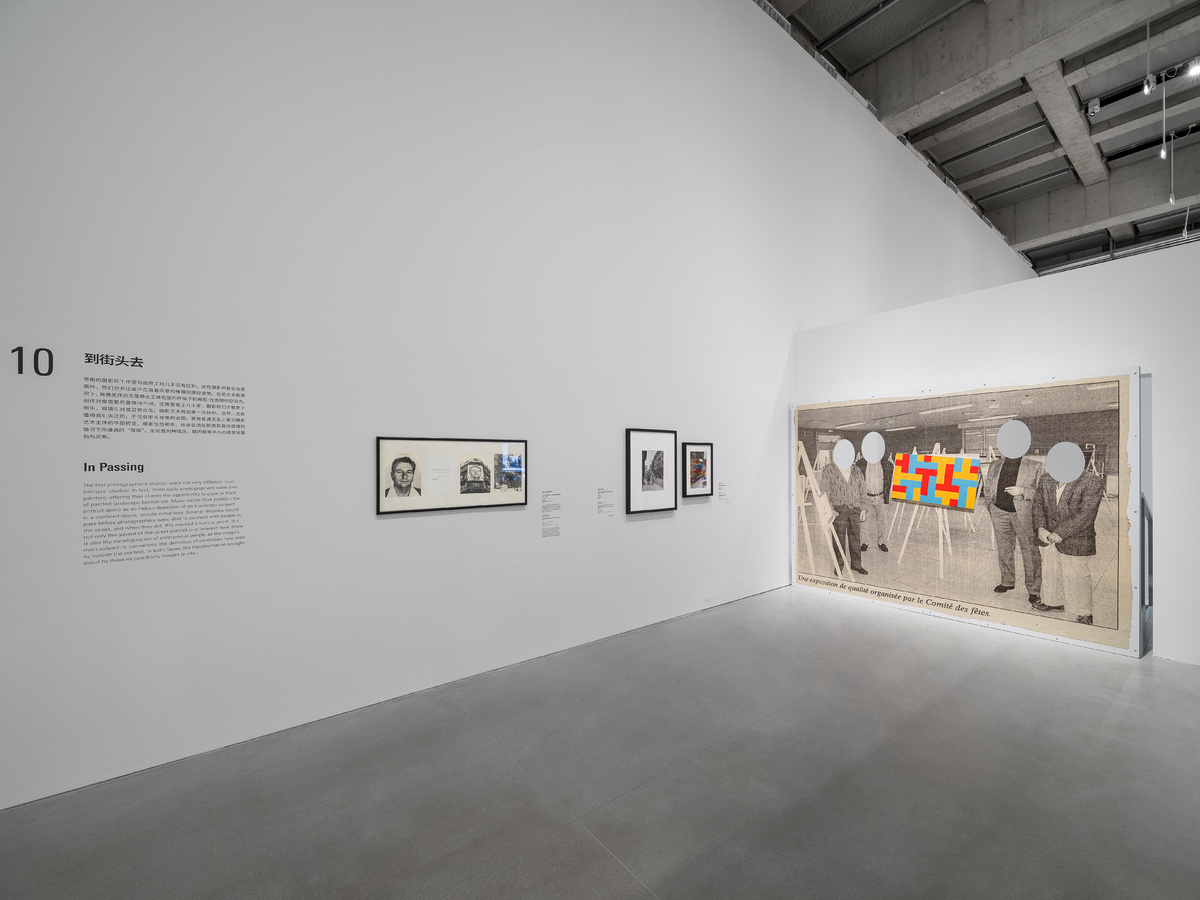
Mirrors of the portrait——Highlights of the Centre Pompidou collection Third semi-permanent exhibition, exhibition view, West Bund Museum, Photo:Alessandro Wang
Section 11: Women in the World
There is no connection between Gregorio Sciltian’s anonymous tradeswoman in traditional dress and the actress Paulette Pax, sheathed in fur, who approached Kees van Dongen, that most mondaine of portraitists, on several occasions. The two works were nevertheless painted at an interval of three years, in 1925 and 1928, in practically identical formats. Also in the same format, the juxtaposition of an André Derain and a Pablo Picasso is less surprising. But the two works are separated by 25 years. Avant-garde quarrels were not far behind Derain while Picasso persisted in showing several faces of his models simultaneously. Both women are seated, seen at a three-quarters angle, and seem to be speaking. The expressions are different: anxious with Derain (on the eve of the First World War), determined with Picasso (on the eve of the Second World War).
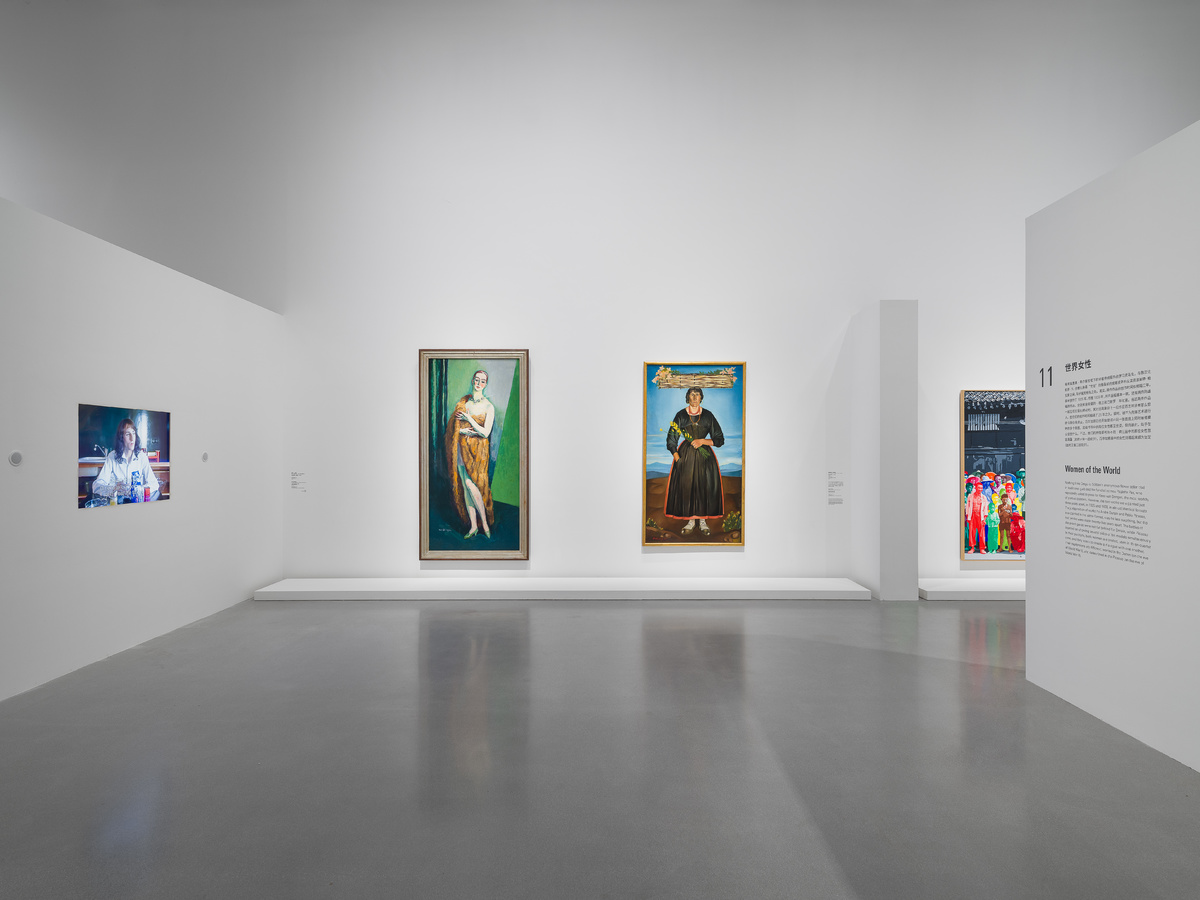
Mirrors of the portrait——Highlights of the Centre Pompidou collection Third semi-permanent exhibition, exhibition view, West Bund Museum, Photo:Alessandro Wang
Section 12: Portraits and Self-Portraits by Artists 2
Two sequences are dedicated to portraits and self-portraits of artists: one in each of the two galleries. In the second, more condensed sequence, we advance through time and the portraits become more indirect. The artists no longer have to show us their face in order to present themselves. Their shadow may suffice, or the expression of preferences, as with Claude Closky, who seeks an unexpected refuge from subjectivity in numbers. It is worth noting the growing tendency of contemporary artists to dispense with models and invite the spectator to identify with them mentally, not through imitation but as an operator in the thought experiment they propose. While Closky’s twenty minutes are first of all his and will remain his, we have to put ourselves in his place in order to perceive and finally accept its particularity.
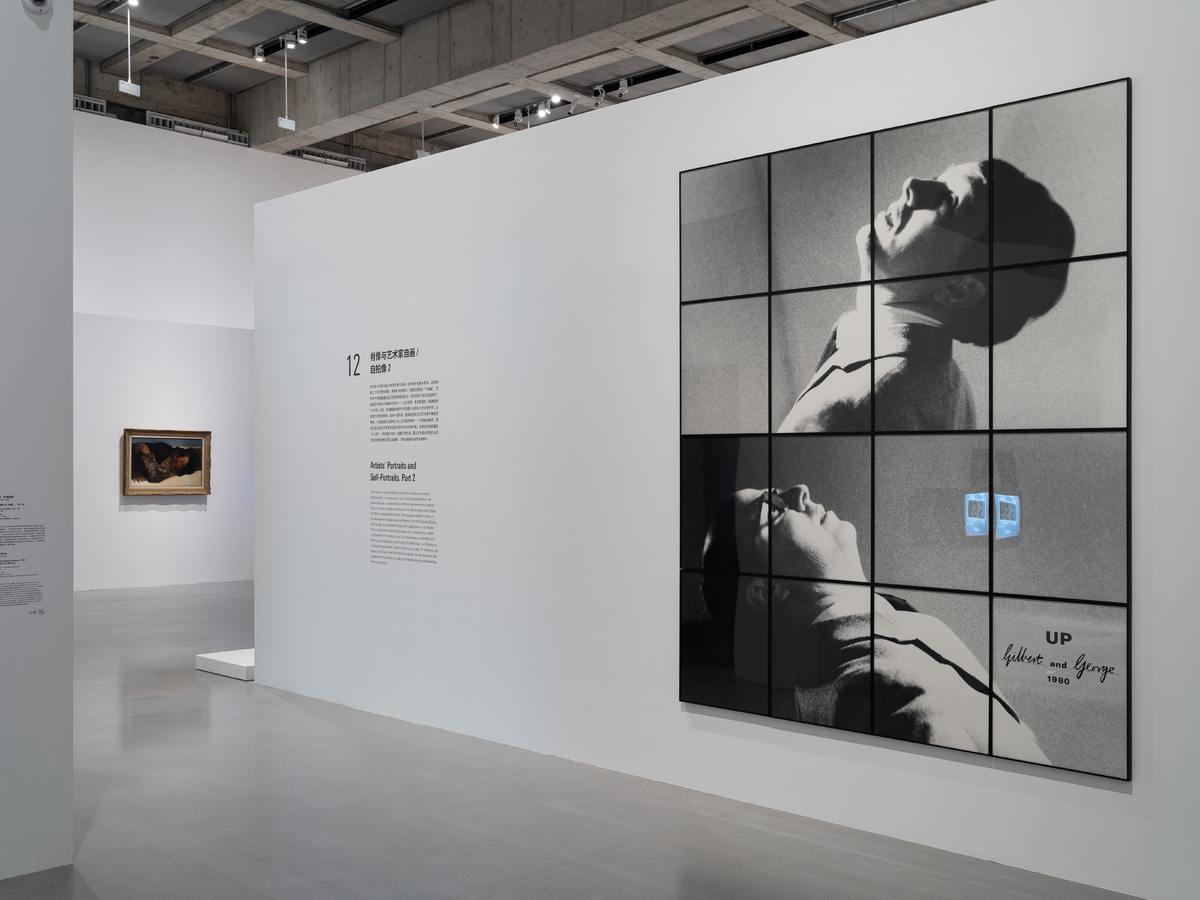
Section 13: Mirrors?
In the course of this exhibition, where each section corresponds to a concept of the portrait that
is anchored in the collective imagination with series of metaphors, that of the mirror was inevitable. Every mirror reflects the portrait we choose to present to it. Following on from Lewis Carroll and his Through the Looking-Glass, one may wonder what lies behind such a screen, but first there are reasons to question this image of the self, which is not as faithful as is commonly believed since, precisely, it transforms each of us into an image. Given this situation, what can we conclude? Martial Raysse turns the question around by confronting spectators with their image seen from behind in the reverse mirror of his brief video presentation.
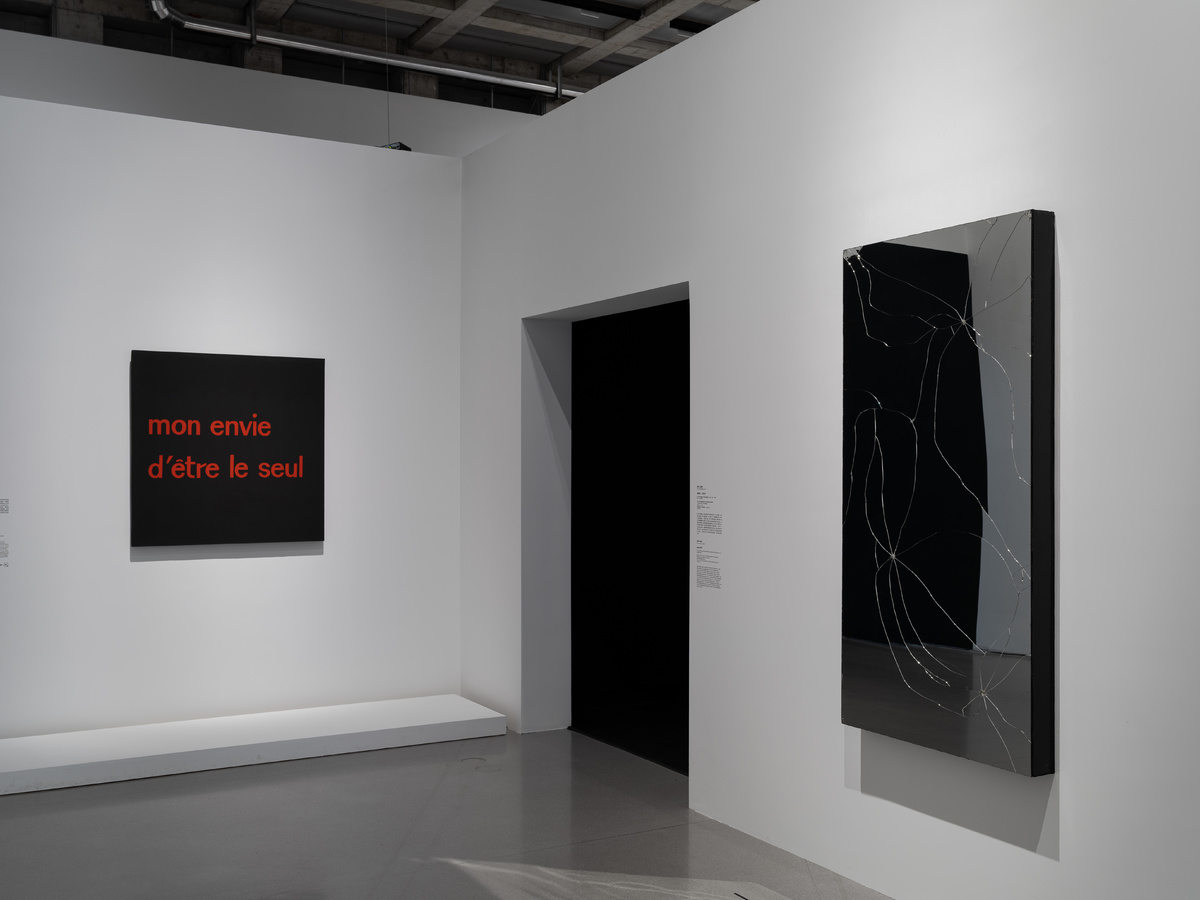
Mirrors of the portrait——Highlights of the Centre Pompidou collection Third semi-permanent exhibition, exhibition view, West Bund Museum, Photo:Alessandro Wang
Section 14: Homages
A homage is a sort of portrait in absentia, often an acknowledgement of a debt to a person who has passed away. The funeral oration or the final homage ends up by erasing the initial idea of a relationship involving subordination, loyalty and fidelity. Although an oath of fidelity may subsist when it is no longer an oath to a person but to the memory of the person. The homage is then addressed more surely to the witnesses than to she or he who can no longer hear it. We fawn upon the living and we praise the dead. Is it because we cannot help thinking that those who can hear them could not support sincere compliments? Francis Bacon thus painted his foreseeable debt to Vincent Van Gogh and Robert Combas paid off his debt to Walt Disney, while René Magritte paid homage to Jacques-Louis David.
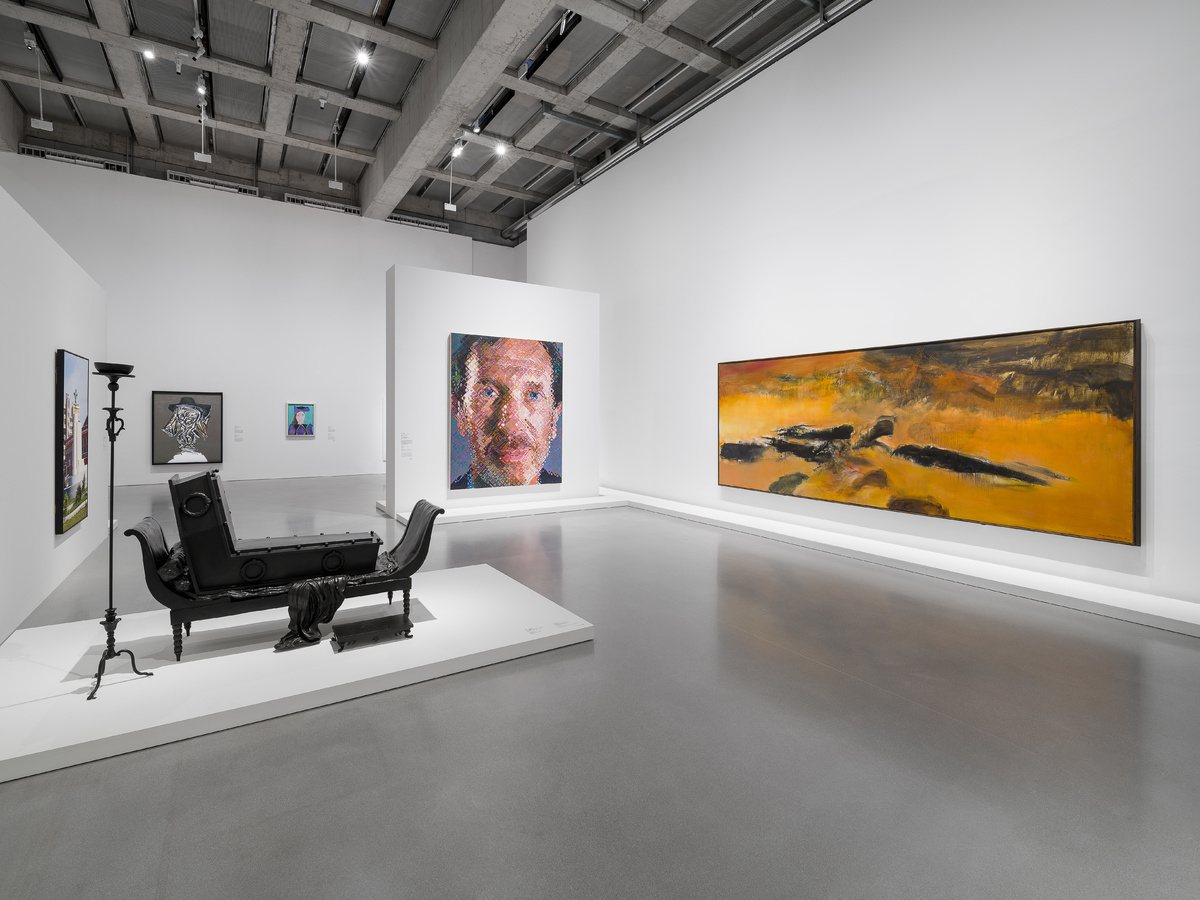
Mirrors of the portrait——Highlights of the Centre Pompidou collection Third semi-permanent exhibition, exhibition view, West Bund Museum, Photo:Alessandro Wang
Section 15: Hats off!
We don or doff our hat depending on the occasion. It can depend on one’s religious persuasion, the weather, the place we are in and the applicable etiquette. Sometimes wearing a hat makes no sense other than to be able to remove it briefly out of politeness and replace it immediately. This is not just a question of fashion, other conventions also influence it. The hat that appears in this section is precisely one of those that we remove when we take a bow, to testify to our admiration and to take our leave. «Hats off», as English-speakers say. “Chapeau bas“, or just “Chapeau“ as the French say.
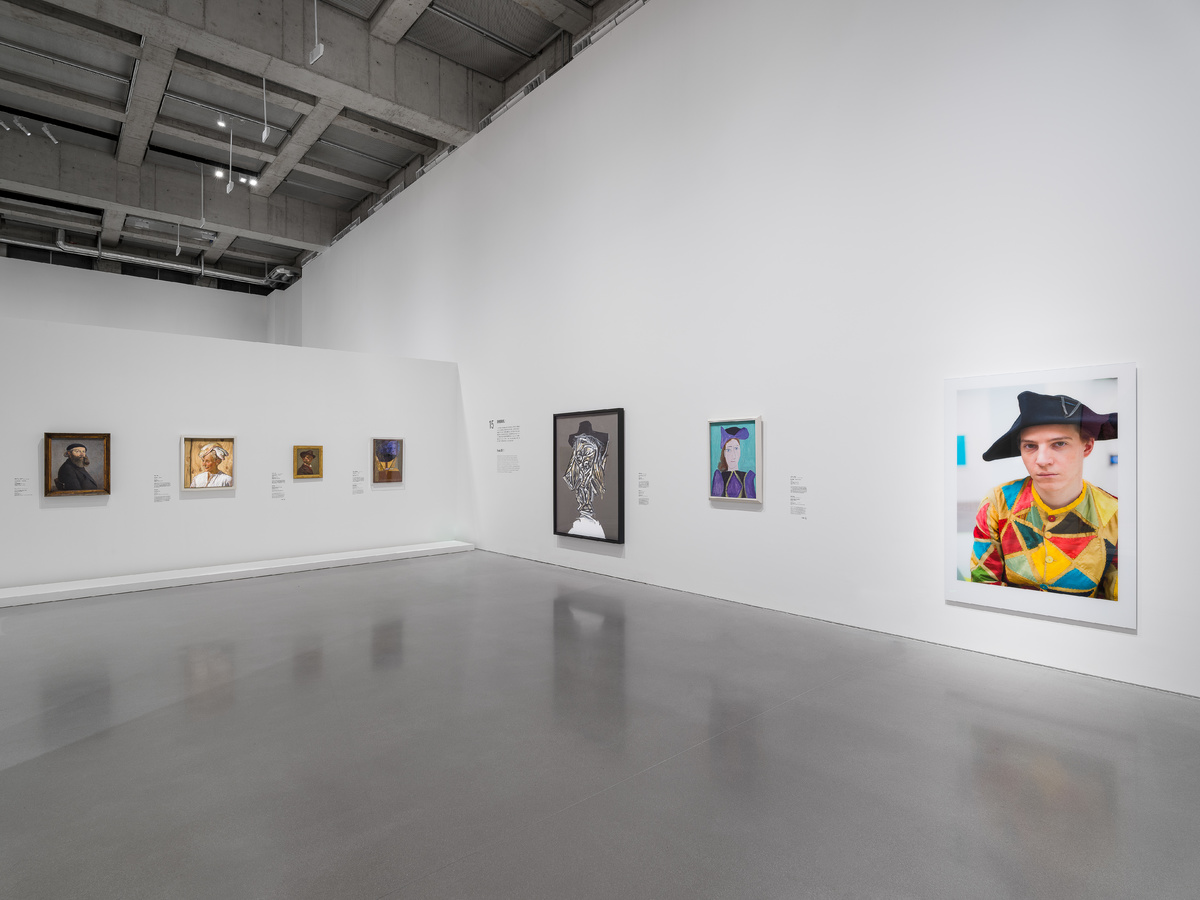
Mirrors of the portrait——Highlights of the Centre Pompidou collection Third semi-permanent exhibition, exhibition view, West Bund Museum, Photo:Alessandro Wang

